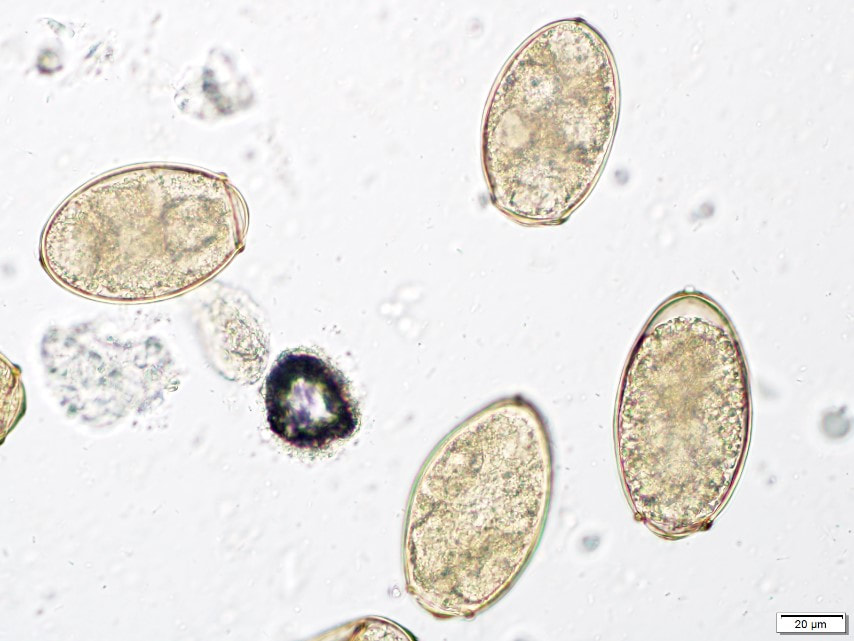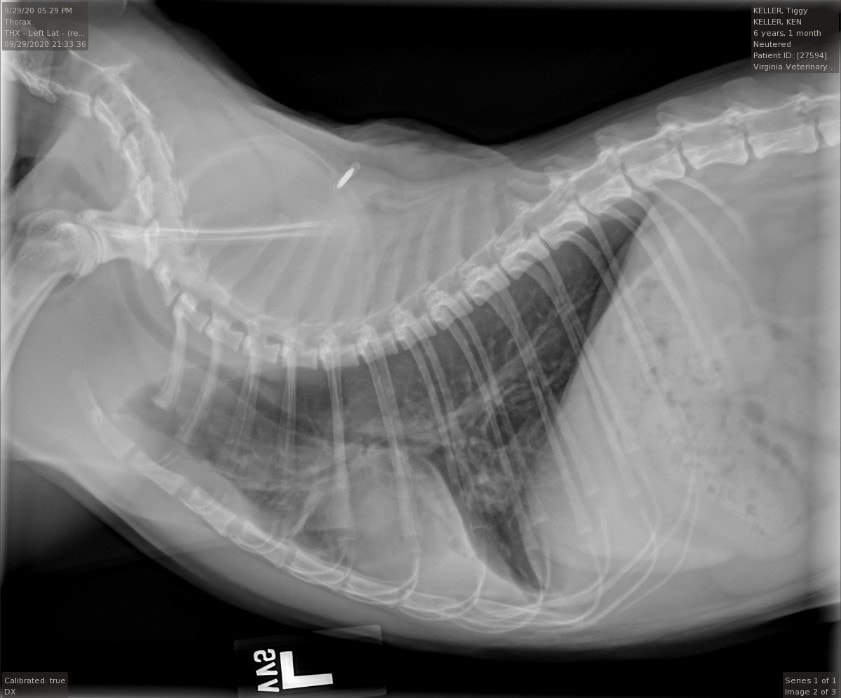Not another coughing catA 6-year-old formerly-feral domestic shorthair cat presented to a veterinary internist in Virginia for chronic coughing. Serum antigen and antibody testing for heartworm infection was negative. A fecal sample was collected and submitted to a diagnostic laboratory for evaluation, which revealed the presence of the following parasite ova (Image 1). In addition, thoracic radiographs were taken (Image 2). Based on these results the cat was treated by the internist with weekly fenbendazole and ivermectin, but the parasite persisted in serial fecal exams and recheck radiographs were relatively unchanged. Image 1: Ova found on fecal examination (40x objective). Image 2: Left lateral radiographic view of thorax. Radiographs demonstrated right middle lung lobe consolidation with heavy bronchial pattern and cavitated lesions. Paragonimus kellicotti, also known as the lung fluke, is a trematode found throughout North America. The parasite has a 3-host life cycle in which the infective larval stage (miricidium) first penetrates an aquatic snail, where it develops into a cercaria and later exits the snail to encyst within the tissues of crawfish. The life cycle is completed when a vertebrate definitive host (animal or human) consumes a crawfish containing these cysts, and the parasites migrate from the gastrointestinal tract to the lungs where they encyst and reproduce. Eggs are coughed up in sputum, swallowed, and passed into the environment via the host's feces. Encystment of Paragonimus within the lung parenchyma most often results in the clinical signs of chronic, persistent coughing (in rare cases, rupture of a lung cyst can result in pneumothorax and acute dyspnea). Large cysts may be appreciated on thoracic radiographs as nodular or cavitary lesions, particularly in the right caudal lung lobes. In this case, the paragonimiasis in this cat likely persisted due to an inadequate treatment protocol. Paragonimus treatment differs from that of lung nematodes in that it requires the use of praziquantel (often used in conjunction with a benzimidazole) in order to eliminate the parasite effectively. Comments are closed.
|
Archives
July 2024
Have feedback on the cases or a special case you would like to share? Please email us ([email protected]). We will appropriately credit all submittors for any cases and photos provided.
|


